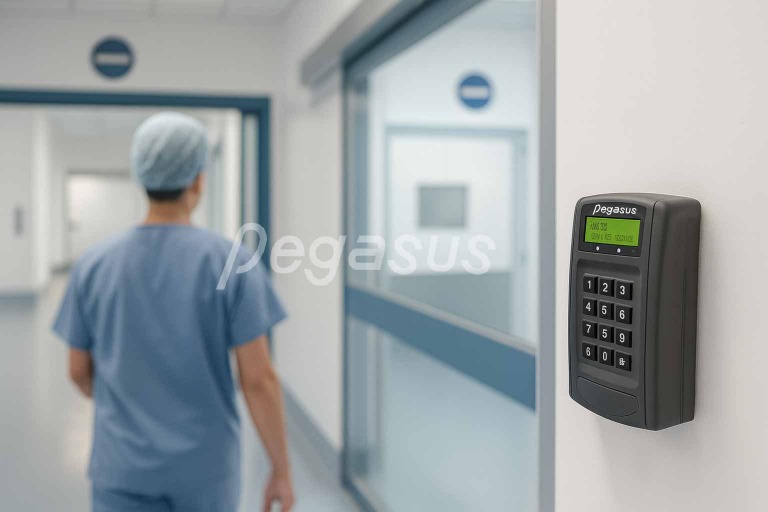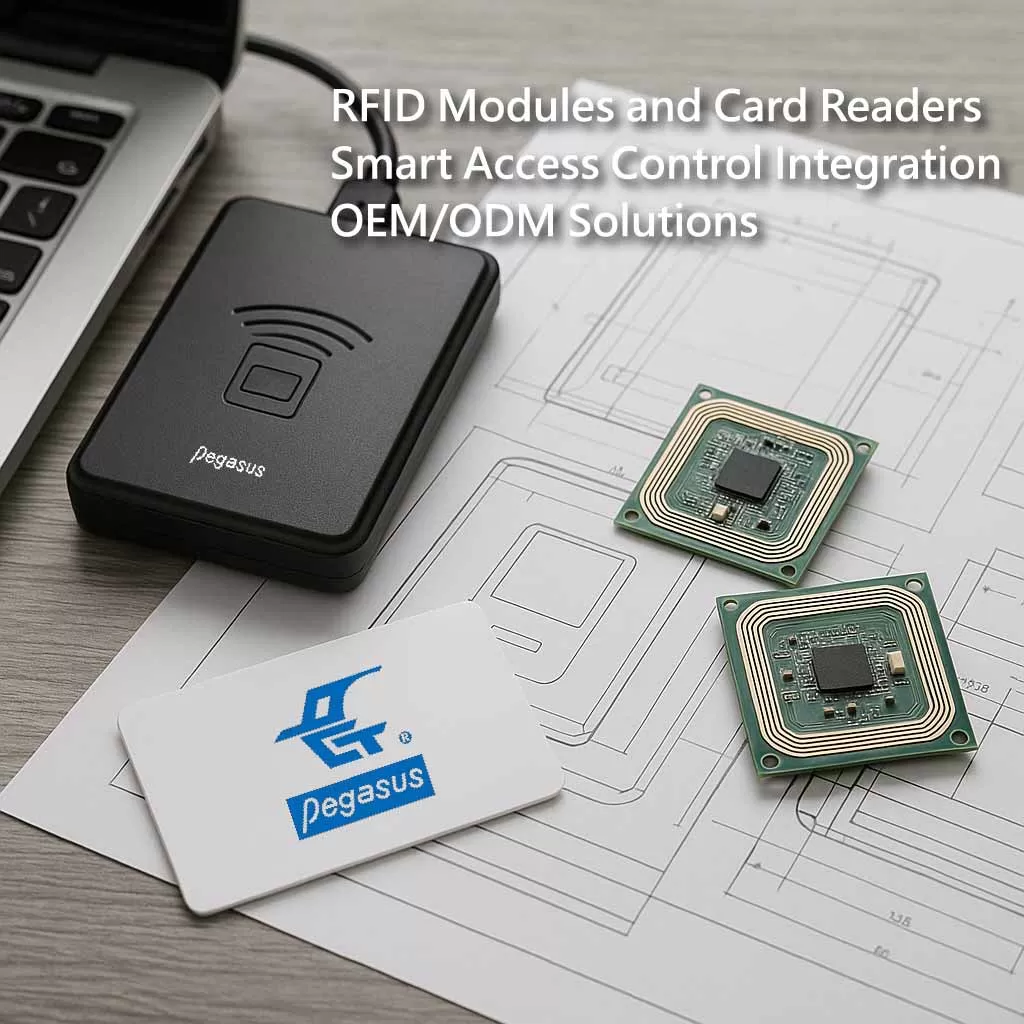RFID Medical Access Control Secure Hospital Area Management & Infection Prevention Efficiency
RFID Medical Access Control Secure Hospital Area Management & Infection Prevention Efficiency
RFID technology becomes increasingly integrated into hospital operations, access control systems are evolving beyond traditional proximity cards and paper-based records. Modern medical facilities are adopting contactless identification combined with backend data management to achieve intelligent, multi-level access control.
In high-sensitivity areas such as operating rooms, pharmaceutical storage, and restricted-path personnel routes, RFID solutions significantly improve authorization efficiency, reduce cross-contamination risks, and strengthen overall information security and patient safety management.

Limitations of Traditional Hospital Access Control:
Most common issues include the following:- Relies heavily on paper-based applications and manual approval processes, which are slow and error-prone.
- Uses basic proximity cards for door access, lacking real-time authorization and tiered permission control.
- Access cards are easily lost, shared, or misused, creating security vulnerabilities.
- Cannot accurately track or review personnel movement paths or dwell time within restricted areas.
RFID Tiered Access Control Solutions
Pongee Technology provides a wide range of RFID modules supporting ISO 14443A/B, ISO 15693, and ISO 18092 protocols. These modules integrate seamlessly with backend authorization systems and movement-tracking mechanisms, enabling hospitals to implement hands-free, tiered access control that meets medical “no-touch” operational standards. The solution is widely applied across wards, operating rooms, pharmaceutical storage, sterilization areas, laboratories, and administrative zones.
1. Support for Medical-Grade Hands-Free Access
Integrates with access gates, electronic locks, and facial recognition devices to build a fully contactless entry system, reducing cross-contamination risks.2. Tiered Authorization and Scheduled Access Management
Allows hospitals to configure time-based and zone-based permissions for different roles, such as medical staff, cleaning personnel, and external vendors.3. Movement Tracking and Exception Alerts
Access logs automatically synchronize to the backend system. A visual dashboard enables real-time monitoring of abnormal movements or extended dwell times.4. Modular Design with Multi-Interface Integration
Supports RS-485, UART, Wiegand, and TCP/IP protocols, making it compatible with both existing and newly deployed access control systems.5. Integration with RFID Medical Asset Tags and Management Platforms
Enables simultaneous tracking of personnel and critical medical equipment, forming a comprehensive digital traceability system across the facility.Contamination-Level Zoning and Personnel Flow Regulations Across Hospital Floors
8F: Mild Contamination 7F: Moderate Contamination 6F: Severe Contamination
Personnel movement follows a one-way downward flow to prevent cross-contamination. Movement from higher-contamination zones back into lower-contamination areas is strictly prohibited. All routes ultimately direct personnel toward the exit area, ensuring a consistent flow pattern and reducing contamination risks.
In principle, movement is only allowed downward, never upward, to prevent contamination from spreading between different zones.

This diagram shows the 8F, 7F, and 6F floors, each equipped with 50 RFID access control points, all connected through three RFID control readers per floor and centralized to a HUB, with the backend managed by a unified control software system.
Through this architecture, administrators can:
- Monitor access activities on each floor in real time
- Adjust authorization levels dynamically
- Enforce an access control mechanism that aligns with contamination-level zoning principles

RFID Networked Access controllers

Their core function is to centrally manage multiple access points and transmit real-time data including entry logs, authorization settings
and device status back to the management platform.
Benefits of Actual Implementation
This system can be deployed in teaching hospitals, regional medical centers, laboratory buildings, sterile pharmaceutical environments, and other high-control facilities to help strengthen access records and risk management.- Enhanced Infection Control:
The contactless access design and hands-free movement tracking significantly reduce the risks of cross-contamination and hand-borne transmission. - Tiered Authorization to Enforce Management Policies:
The backend system allows dynamic permission settings based on departments, shifts, or job roles, preventing unauthorized personnel from entering restricted areas.
- Real-Time Tracking and Auditing:
Comprehensive logs of entry times and movement routes support internal audits and compliance inspections by health authorities. - Improved Information Security and Operational Efficiency:
Reduces manual logging and misuse of access cards, enabling medical staff to focus resources on core patient care operations. - Support for Long-Term Expansion and Data Integration:
Capable of integrating with hospital ERP, scheduling systems, energy management platforms, and more—building a complete smart healthcare infrastructure.
Note:The above benefits are based on individual customer cases. Actual results may vary depending on the implementation environment.
Extended Application Scenarios
- Suitable for hospitals, pharmaceutical manufacturers, and research laboratories, the system can also be expanded to support access management in quarantine facilities, central kitchens, and sterilization areas.
- It can be integrated with RFID readers, UHF readers, smart door locks, and electronic gates to form a comprehensive access control and workflow management solution.
- Designed to comply with hospital infection control requirements, ISO audit standards, and GMP sterile-process management guidelines.
(FAQ)
Q1:How is RFID access different from traditional card systems?
A1:RFID modules offer contactless operation, real-time authorization, and automated logging providing more security and efficiency.
Q2:Can this system support tiered access control for different roles?
A2:Yes. Permissions can be customized by role, time slot, and zone ensuring that unauthorized personnel cannot access restricted areas.
Q3:Can it integrate with existing access or surveillance systems?
A3:Yes. The system supports standard communication protocols and APIs for seamless integration with current hospital infrastructure.
Q4:Can it also track medical assets like carts and instruments?
A4:Yes. With UHF RFID tags and readers, both personnel and high value medical equipment can be tracked in real time.
Partnership & Consultation
📚 If you are a system integrator or distributor seeking RFID-based smart access control solutions, we welcome you to contact us.
We provide RFID modules, readers, and technical integration support to help accelerate your project development and deployment planning.



